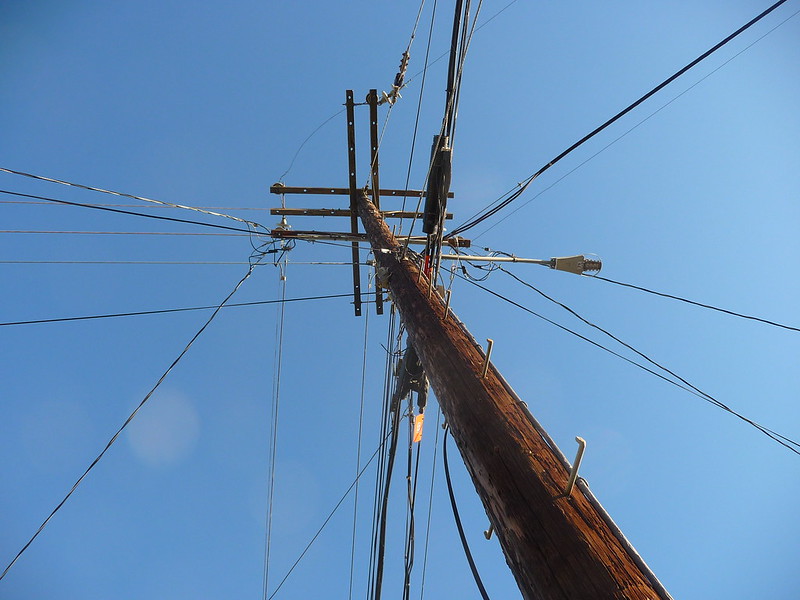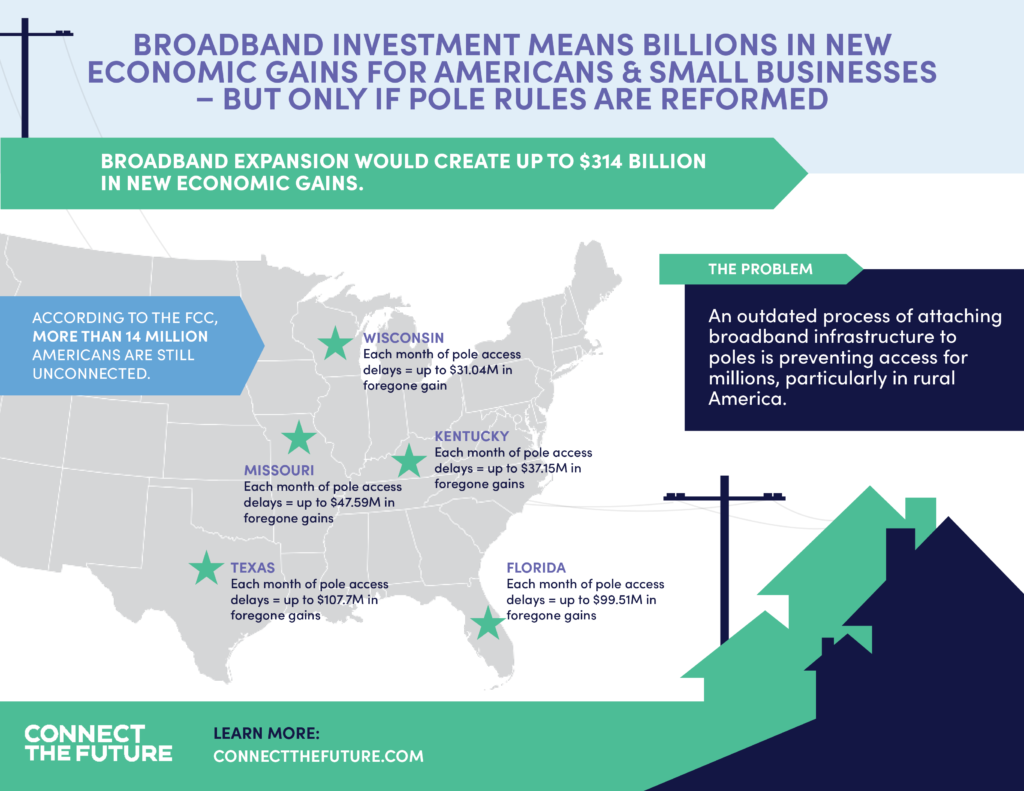
New Report Highlights Importance of Utility Poles to Broadband Deployment
By: Katie McAuliffe
Thanks to the resiliency of American networks, millions of Americans were able to quickly access their work, healthcare, education, entertainment and community from the safety of their homes. Today however, there are still many who lack broadband access and the opportunities that it affords.
A new report has confirmed how significant of a barrier that utility pole attachment policies are to the deployment broadband in rural areas. Right now, unfair policies imposed by pole owners are costing Americans anywhere from $491 million to 1.86 billion in foregone economic gains. Now is the best time to implement changes to these practices and help bridge the divide for millions of Americans.
Utility poles may seem like an arbitrary piece of infrastructure to focus on, but they actually play a critical role in closing the digital divide. There are 180 million utility poles in the United States that already connect every American with electricity, and 71% of U.S. households already use a wired internet connection. Additionally, utility poles are vital conduit in rural areas where it is a comparably cheap way of delivering service as opposed to burying the cables. The economics play out the same for broadband cables as well.
Entities who own utilities poles such as municipalities, cooperatively owned utilities (“Coop’s), and investor-owned utilities (“IOUS”) exercise significant market power to set terms, conditions, attachment rates, and other policies that place costly and unfair burdens on third-parties who seek to use the poles such as broadband providers. Some owners limit the number of attachments or refuse to consider attachments at all. And when they do decide to review attachment applications, they impose high fees and terms that sometimes require the broadband provider to cover the entire cost of replacing the pole, even before its service life has ended.
Stalling the expansion of broadband comes with a cost. Broadband providers covering 100% of the cost responsibility for replacing poles results in delayed or fewer investments. The report estimates that the deadweight loss from holding broadband deployment is anywhere between $491 million to $1.86 billion. Additionally the report shows how these harmful pole attachment policies impacts individual states:

No matter if providers use cable, fiber or DSL, pole attachment fees will impose significant additional costs to deploying broadband. If we want to connect residents and small businesses in unserved areas, there is a strong case for policy makers to check the market power that pole owners enjoy.
Proponents of utility pole attachment reform do not argue that broadband providers or other third-party user’s shouldn’t be expected to cover the costs of new poles or pay a fee to use the infrastructure, but that fee should fair, and in most cases it has not been.
Addressing the utility pole attachment issue a simple fix that can no longer be brushed under the rug.
You can read the report here.